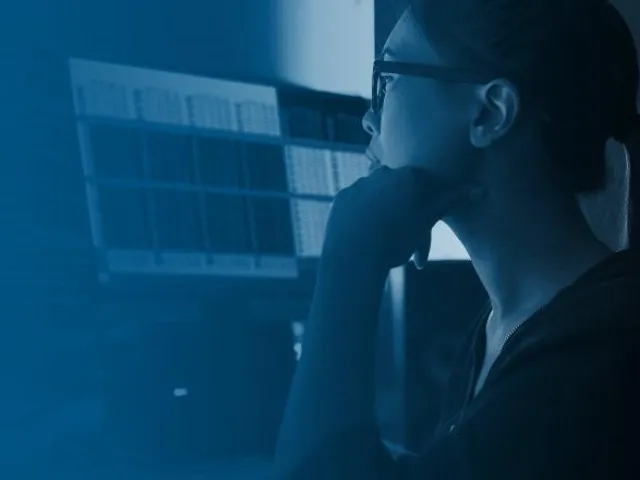Table of contents

For hospitals taking necessary steps to ensure DSCSA compliance, it can be reassuring to see what other hospitals—large and small—are doing to achieve success and how they got there.
The Drug Supply Chain Security Act (DSCSA) and its complexproduct tracking, verification, and serialization regulations affect your business and how you communicate with your supply chain partners. The first phase of DSCSA requirements took effect for dispensers in July 2015, and between now and 2023 new requirements will phase in and strongly influence your operations. There is no getting around the impact of this federal law.
For hospitals that are still figuring out the necessary steps to ensure DSCSA compliance, it can be reassuring to see what other hospitals—large and small—are doing to achieve success and how they got there. Here, you’ll find case histories of five diverse hospitals, illuminating what factors played into their compliance strategy decisions, and how they are achieving operational efficiency today.
KNOX COMMUNITY HOSPITAL
Not all DSCSA compliance solutions are created equally. That’s what Knox Community Hospital discovered the hard way. After struggling with management of T3 documentation and track-and-trace workflow with “an economical vendor” for five months, Knox Director of Pharmacy Robbi Jo Michell-Enderle and Office Data and Operations Specialist Felicia Adams “got exasperated,” Adams says. “We realized they just didn’t have all their ducks in a row.”
“Relieved to connect with TraceLink,” Adams says it didn’t take long for the Mount Vernon, Ohio-based not-for-profit hospital to “reconsider vendors and make the switch.” Read on and learn the reasons why TraceLink won Knox over.
SHARING KNOWLEDGE
In the fall of 2015, when hospitals were facing a looming deadline to comply with federal track-and-trace requirements established under DSCSA, Knox needed to get up to speed. “We didn’t know the in’s and out’s of the law, and had to ask our suppliers how they’d be providing documentation to us,” Adams says, “but they were not forthcoming.”
Feeling they were “left with no choice,” Michelle-Enderle and Adams took on the task of researching third-party solutions for putting new operating procedures into place. With their first vendor, “We thought we were set up with what we needed,” Adams says. “Unfortunately, with them, it was still a confusing process.” Things became “a lot clearer when we came on with TraceLink,” she points out. “Right from the start, TraceLink explained things better.”
CREATING OPERATIONAL EFFICIENCIES
Return on investment is not all about dollars and cents. With Knox’s first vendor, Adams says, “we had an economical solution, but one that cost us hours and peace of mind.” She notes, “Their system was unreliable, not all the bugs were worked out.” Time spent “trying to get into their website took away from other work obligations,” Adams says, “And half the time you couldn’t get access to what you needed.” She and the director of pharmacy eventually came to a realization: “It doesn’t have to be this way.”
Taking a big-picture view of ROI that captures the total positive impact of their DSCSA compliance solution on the hospital, Adams and Michelle-Enderle saw that “TraceLink could help us boost efficiency, save time, and connect better with our vendors.” In fact, “a big selling point of TraceLink for us,” Adams notes, “was that all our supply chain vendors are in the TraceLink network.” For Knox, the better solution would ease their pain—not exacerbate it—and integrate seamlessly with their suppliers, deliver solid results, and add value. “It really hit home how much better the TraceLink solution is both for our operations and our bottom line,” Adams says.
PROVIDING COMPREHENSIVE TRAINING
When Knox first looked at what the hospital needed to do for compliance, “the whole thing seemed daunting,” Adams says. “We knew we had to get expert assistance,” she notes, “but working with our first vendor, it was frustrating.” Adams points out that the vendor “tried addressing things,” but because “a lot of their process was manual, something that should take 30 minutes took half a day.” Adams was expecting the solution provider to make her job easier, yet, she says, “Every day something was going wrong.”
“With our first solution we had an economical solution, but one that cost us hours and peace of mind.” Felicia Adams, Office Data & Operations Specialist.
“One of the best things about working with TraceLink,” Adams says, “is the training you get.” She notes that she didn’t start using the TraceLink solution until about a month after she and Michelle-Enderle went through training. When she was ready to dive in, she “printed the manuals off the website” and “everything we were instructed in training came back to me.” If Adams has any questions, “I email for help and get a quick response with clear instructions,” she notes. “TraceLink has been super helpful with education.”
DEMONSTRATING STAYING POWER
“I’m hands-on,” Adams notes, and says she finds the TraceLink solution “easy to use, easy for accessing data, and reliable.” Moreover, with TraceLink, she says, “you never mind if you’re in an audit because you know you’re in good hands.”
Adams believes TraceLink is a partner Knox can continue to count on. “We feel secure that TraceLink is with us for the long haul,” Adams says. “They’ve shown us that they’re willing and able to assist every step of the way for the implementation and ongoing support.”
NORWEGIAN AMERICAN HOSPITAL
Norwegian American Hospital is a 200-bed, acute care facility that is, literally, a lifeline to the Humboldt Park community that it serves. When Director of Pharmacy Jigar Thakkar came on board at the Chicago, Illinois-based hospital in October 2015, with FDA enforcement of the Drug Supply Chain Security Act (DSCSA) looming, he made DSCSA compliance a top priority. Even with “hundreds of other things going on at the hospital,” Thakkar says, “I put DSCSA compliance as number two on my list.”
Read on and find out what played into Norwegian American Hospital’s decision to outsource their compliance solution and ensure their readiness.
THE REALITY OF REGULATORY INSPECTION
Some smaller hospitals may decide to put off implementing processes that ensure compliance, believing their chances of being inspected are slim. Norwegian American Hospital is not one of them. “Did I ever consider doing nothing, hoping the FDA won’t come around and enforce the law?” Thakkar says. “Definitely not. The FDA has been at this hospital.”
When it comes to complying with government regulations, Tina Spriggs, Pharmacy Buyer at Norwegian American Hospital, is no proponent of a “wait and see” approach either. She understands that regulatory inspections can occur at random and without notice. Other hospitals may not feel pressured about DSCSA compliance but, she notes, “We respect that the FDA comes in and does inspect.”
With federal involvement in DSCSA, not doing due diligence just wasn’t an option for Norwegian American. “To not be thorough about compliance would be too risky,” Thakkar says.
A SEARCH TO STREAMLINE
Norwegian American Hospital regularly orders products from 15 wholesale distributors. From time to time, the hospital buys from additional suppliers, and in some cases, directly from the manufacturer. “With this level of complication, it’s hard to do record keeping and traceability on our own,” Thakkar says.
The hospital at first considered tackling traceability in-house. But after recognizing the complexity of the work that would be involved with each supply partner sending its own forms of paper and electronic documentation, “we were afraid we would get behind with compliance,” Spriggs says. “We have a lot of other priorities,” she notes, “so it would have been difficult to handle ourselves.”
Being aware that the scope and complexity of DSCSA requirements could place untold demands on hospital staff and pull resources away from other urgencies, “We knew we needed a streamlined process,” Thakkar says. “TraceLink’s solution makes it easy.”
APPRECIATION FOR DATA OWNERSHIP
Of Norwegian American’s 15-plus suppliers, several did offer the hospital portal access to compliance data. But Thakkar understood that having to manage various logins, interfaces, and processes is not the most efficient way for the hospital to have easy, reliable access to required information.
“Data ownership definitely played into our decision to outsource to TraceLink,” he says. “You want to have your data in your hands. You want to know that it’s in your shared drive and backed up. You never know what will happen with someone else’s system.”
With a reliable third-party solution, Norwegian American Hospital could avoid the pitfalls of suppliers’ website portals going down at inopportune moments. “We want to be sure that for any inquiries or inspections, we can pull out the data we need in a timely manner,” Thakkar says.
“You want to have your data in your hands. You want to know that it’s in your shared drive and backed up. You never know what will happen with someone else’s system.” Jigar Thakkar, Director of Pharmacy
A TRUSTED ADVISOR
For hospitals and pharmacies, it’s no easy task to fully comprehend DSCSA and all its implications. Requirements for staying in compliance with government regulations are constantly evolving. Norwegian American Hospital understands that in a DSCSA-regulated world, partnering with a DSCSA solution provider lays the groundwork for future success. “We’re confident TraceLink will continue to guide us,” Spriggs says.
ASPIRUS LANGLADE HOSPITAL
The advent of FDA enforcement for dispensers came and went on March 1 with no major headlines, but that doesn’t mean that hospitals are necessarily flying under the Drug Supply Chain Security Act (DSCSA) radar. We caught up with one small Wisconsin hospital to learn what key factors—such as past lessons learned when federal investigators unexpectedly showed up at their door—led them to seek a full-scale compliance solution.
PREPARING FOR DSCSA
Aspirus Langlade Hospital is located in Antigo, Wisconsin, and comprises two dispenser locations: the hospital and an adjacent cancer center. The pharmacies conduct direct and indirect business and drop-shipments with 13 trade partners. Aspirus Langlade Pharmacy Manager Stacy Brownell prepared herself for DSCSA by attending a number of webinars offered by TraceLink and Vizient, the hospital’s group purchasing organization (GPO). “It was those two companies, and links to all the guidance that had been published by the FDA, that really spurred my research,” she says.
Brownell discovered that the scope and complexity of DSCSA requirements have the potential to place unheralded demands on hospital staff. “Anything that comes from the government is complex,” Brownell continues. “With serialization, the regulations will change every year until 2023.
RULING OUT A “DO-NOTHING” OR HOMEGROWN APPROACH
Looking at a box full of unsorted packaging slips last October, Brownell determined that a homegrown solution wouldn’t be adequate for storing, archiving, and accessing all the data required by the DSCSA. “It would still be a manual process and I knew it wasn’t going to be searchable like I needed it to be. It would be far too labor intensive for our small pharmacy to handle it with the number of people we have,” she said.
Other hospitals that Brownell spoke to seemed less concerned about DSCSA compliance.“When I asked what they were going to do, there was no reply.” Brownell was concerned, in part, with protecting her own license and reputation. “My name is on the license with the state. I’m not willing to put my license and my hospital pharmacy license on the line,” she says. “I would have to answer to the FDA if they chose to come visit us. There isn’t anybody else in the hospital that is responsible for compliance. I can’t pass the buck—it’s all on me.”
Talks between the hospital’s leadership team and business partners like Vizient made it clear that a third-party solution would deliver a scalable model that an internal system could not. “In the future, how will you comply with lot-level recalls and serialization?” she asks. “I don’t know how a homegrown system would ensure everything you need to have.”
“In the future, how will you comply with lot-level recalls and serialization? I don’t know how a homegrown system would ensure everything you need to have.” Stacy Brownell, Pharmacy Manager.
EXPECTING THE FDA
Aspirus Langlade staff is well aware that an inspection can happen to any business of any size in the supply chain, which is the other reason that “doing nothing” wasn’t an option for them. “The FDA has already been in our hospital once,” Brownell says.
In 2013, the FDA was investigating one of Aspirus’ upstream suppliers due to a concern that some of the drugs they provided were counterfeit. “The FDA wanted to know how we knew they are not counterfeit,” Brownell says. In addition to drug product, investigators wanted to see the documentation. “They asked us to show them what was on our shelves, our invoices, and where we purchased from” Brownell says the hospital was caught off guard. “They showed up unexpectedly,” she says. That experience of feeling caught unprepared is not one that pharmacy staff is eager to repeat.
CHOOSING A PROVIDER
When it came to selecting a provider, Brownell explains that searchability and price were both “huge decision factors.” Searching by drug and national drug code (NDC) was an important advantage that TraceLink offered. TraceLink was also less expensive than the other third-party solution she considered. Plus, Vizient had recommended TraceLink.
Tapping into TraceLink’s established network of trade partners meant that most of Aspirus Langlade’s suppliers were just a single connection away, significantly reducing system integration and project implementation efforts. “Implementation timeframe was important, because I had waited until the last minute,” Brownell says.
Moreover, Brownell points out, “The TraceLink network is key. It’s been beneficial because I’ve had to do very little work in setting up the relationships with my suppliers. All I had to do was provide company names and account numbers. That took maybe half an hour.” In addition, the conversations she had with the TraceLink Services team have helped her feel like she made the right decision. “I feel very comfortable based on the many conversations I’ve had with my contact person and the implementation teams.”
What advice does Brownell have for hospitals still weighing DSCSA options? “Start now. TraceLink will do the hard work of figuring out how to enable you to stay compliant down the road. It’s reassuring to have a partner that—if the FDA does show up—I feel comfortable that I could call and ask for help.”
CHEYENNE REGIONAL MEDICAL CENTER
DSCSA lot level requirements took full effect for dispensers on July 1, 2015. Like many other facilities, Cheyenne Regional Medical Center realized months before the deadline that they would need a streamlined way to manage compliance requirements and data.
Director of Pharmacy Timothy Steffen sums up their perspective when they first started thinking about this in January of 2015: “I wanted one solution to make it easy so my team isn’t wasting time, and I’m not getting constant phone calls from confused staff.” Sound familiar? If your organization is still evaluating how you’ll approach DSCSA, read on to find out why Steffen and this 222-bed facility chose a third-party compliance solution.
SCALABILITY
For some operational needs, Cheyenne Regional Medical Center relies on internal solutions. In fact, Steffen came aboard three years ago when Cheyenne chose to bring their pharmacy management in-house.
Cheyenne Regional briefly explored a homegrown solution when it came to compliance, also. As Steffen explains, “I contacted our IT department and had concerns about whether we had enough storage space to accommodate all the compliance data.” And resource factors went beyond just data storage. “We knew that we would need more staff to handle compliance data ourselves. That’s when we realized we couldn’t manage it in-house,” he says.
EASY ACCESS TO DATA
The biggest concern for Cheyenne Regional was having easy, reliable access to required information when they are receiving product or sending compliance documentation as part of a product loan.
The medical center purchases from 15 suppliers. Much of their product comes from one of the three major wholesale distributors, which provides portal access to compliance data. Steffen says that website is easy to use but goes down quite frequently, making it challenging to get information whenever you need it.
A reliable third-party solution can help prevent a negative impact on operations. “If your department constantly has to reach out to get and manage compliance documentation, then it could absolutely impact patient care,” Steffen says. “With the right tools where data is automatically captured, downloaded and searchable, that isn’t a concern.”
“If your department constantly has to reach out to get and manage compliance documentation, then it could absolutely impact patient care.” Timothy Steffen, Director of Pharmacy
SIMPLICITY
It’s no surprise that a main goal for Cheyenne Regional was to minimize compliance complexity. “The law and its requirements are complicated. There’s so much data you have to hold onto, submit and pull into one document,” Steffan notes. “When you only have 48 hours for an inquiry, why should you have to scramble to track down that data?”
Plus, adhering to compliance raises a complex checklist of priorities, including:
• Is all documentation correct, and does it match the actual shipment?
• How do we store all this documentation for the required six years?
• For inquiries or inspections, how do we pull out the required documents in a timely fashion?
With so much to consider and so many procedures to adjust, it’s easy to see why Cheyenne Regional Medical Center wanted a compliance solution that streamlines processes and provides some built-in guidance.
RISK AVOIDANCE
While it can be tempting to go it alone or avoid compliance altogether, those aren’t really options with so much at stake. Failure to comply with DSCSA can lead to fines, suspension or revocation of license, and even potential imprisonment or civil penalties.
According to Steffen, “I don’t want that risk. No matter how much you think you know, there always seems to be some little nuance that will cause a surprise. Everyone is still trying to fully comprehend DSCSA and all the implications.”
In fact, Steffen wishes they’d started figuring out their compliance solution sooner. “There were a lot of people scrambling in June. We wanted a solution for the July deadline, but didn’t realize that it takes a while to put one in place. Dispensers who still don’t have a solution need to start looking now, fully understand the law, and know their suppliers.”
CRAWFORD MEMORIAL HOSPITAL
Crawford Memorial Hospital cares acutely about its patients and about doing the right thing. Even though the critical access facility cannot exceed 25 patients and is located some 30 miles from other healthcare facilities in Crawford County, Illinois, Director of Pharmacy Kelly Meeks says, “we are small and remote but we are still held to all the same regulatory standards as larger hospitals.” After learning about DSCSA and its requirements for hospitals, Meeks says, “We knew we would need to put a viable solution in place.”
This is how Crawford Memorial came to choose TraceLink as their answer to taking care of DSCSA compliance details, so that they can continue, undisturbed, to put their attention on taking care of patients in need.
GETTING UP TO SPEED: DOING THE RESEARCH
When the new product tracing requirements for dispensers took effect in July of 2015, “we started getting a lot of emails from our primary wholesaler about compliance,” Meeks says. At the time, she notes, “not a lot of people had done much on DSCSA. Doing little or nothing was not an option for Crawford Memorial. “It never crossed our mind to ignore the new law,” Meeks says. “We have a culture of complying here.”
For Meeks, it was imperative to gather information and gain a sound understanding about track and trace requirements for Crawford Memorial in a DSCSA-regulated world. “Regulatory agencies don’t usually put things out that aren’t necessary,” she says. The director of pharmacy points out that while she is expected as part of her job to produce quarterly compliance reports, “I would do it anyway, because it’s the right thing to do.”
Meeks’ research into the new legislation included poring through DSCSA details on a number of industry websites. What came of it? “I realized we were behind the eight ball and we had to get moving,” she says.
TAKING THE FIRST STEP: INVESTIGATING SOLUTIONS
When it came time for Crawford Memorial to search for a solution, HealthTrust Purchasing Group provided the member hospital with a list of eight vendors. Meeks quickly culled the list down to TraceLink and two other companies, “based on their websites which seemed the most sophisticated,” she says.
Before contacting any vendor, Meeks signed up for a TraceLink webinar she learned about from an email. “TraceLink was the only proactive company,” she says, “Nobody else reached out to us. Nobody else invited us to webinars.”
The director of pharmacy notes, “TraceLink’s information was most complete.” What equally impressed her as she was exploring vendors, she notes, was TraceLink’s customer service.
“Neither of the other two companies we interacted with was very good about communication,” she says. “As someone who’s responsible for everything, I appreciate people who are willing to spoon feed me information. TraceLink followed up beautifully.”
MAKING A CHOICE: FOCUSING ON COMPETITIVE ADVANTAGES
In their search for a solution, Crawford Memorial was given three demos and found that “essentially everyone has the same bones,” Meeks says, “but TraceLink has by far the most trading partners on their network,” making for easier setup with suppliers and dispensers to whom they resell product. She also points out that “given the company’s been around longer, is strong in customer service, and was willing to work with us on their price quote, it was a no brainer for us to go with TraceLink.”
“We have a very robust compliance program here, and if we can streamline by getting on the electronic bandwagon right away, why wouldn’t we do so?” Kelly Meeks, Director of Pharmacy
Another evaluating factor for Crawford Memorial was operational efficiency. “We buy 97 percent of our meds through Baxter and Cardinal,” Meeks notes, “and because we’re small and rural, there’s a lot of trading back and forth with retail pharmacies and hospitals, nursing homes, EMS, the area prison. When you add all those trading partners, it starts getting crazy.”
Meeks says that the hospital quickly ruled out a manual approach to receiving and storing compliance documentation. “We have a very robust compliance program here, and if we can streamline by getting on the electronic bandwagon right away, why wouldn’t we do so?” she says. “Why would you do a manual system now if eventually it’s got to be electronic?”
Running a critical access facility takes great attention and care. Meeks understands that “regulations will likely slow us down, but record keeping will be easier with TraceLink.” For Crawford Memorial, TraceLink is the solution to automating enough of the tiny but crucial tasks so that the hospital has the time to treat its critical patients.
You can also download this collection of case histories to learn how five diverse hospitals are achieving operational efficiency today, and what factors played into their decisions to outsource their solution.






